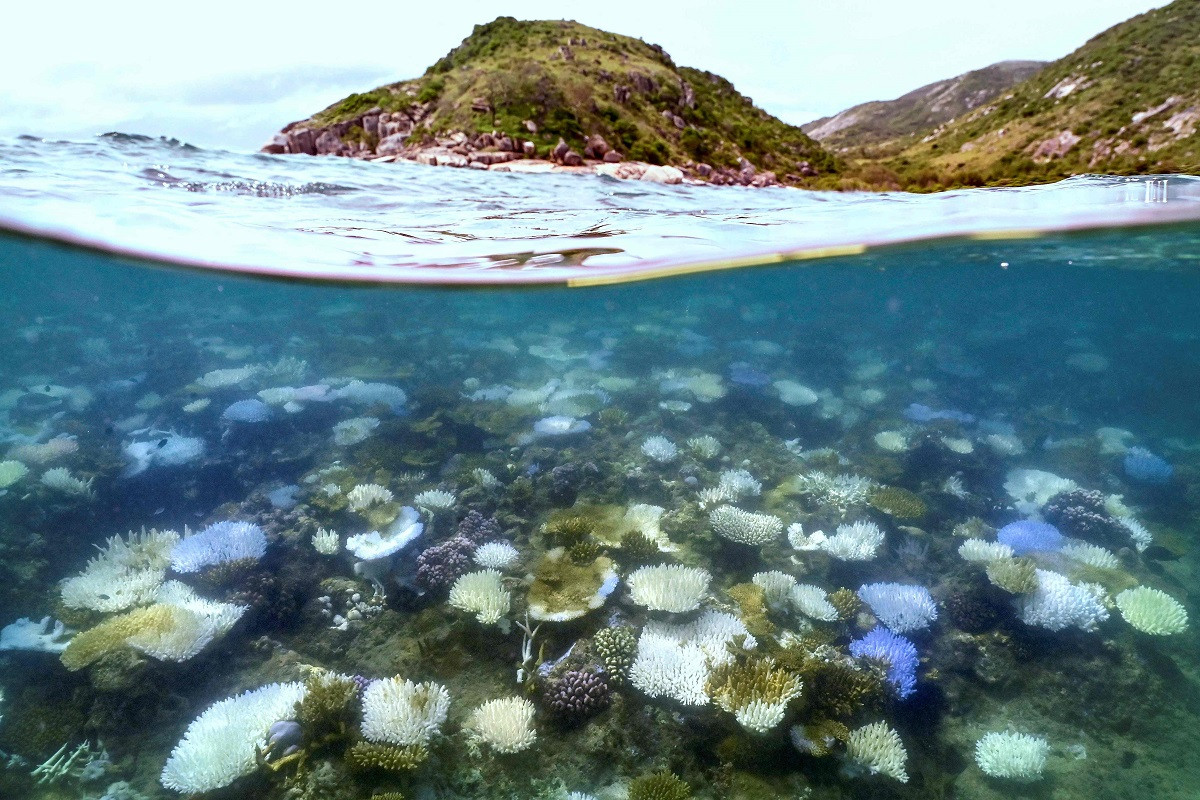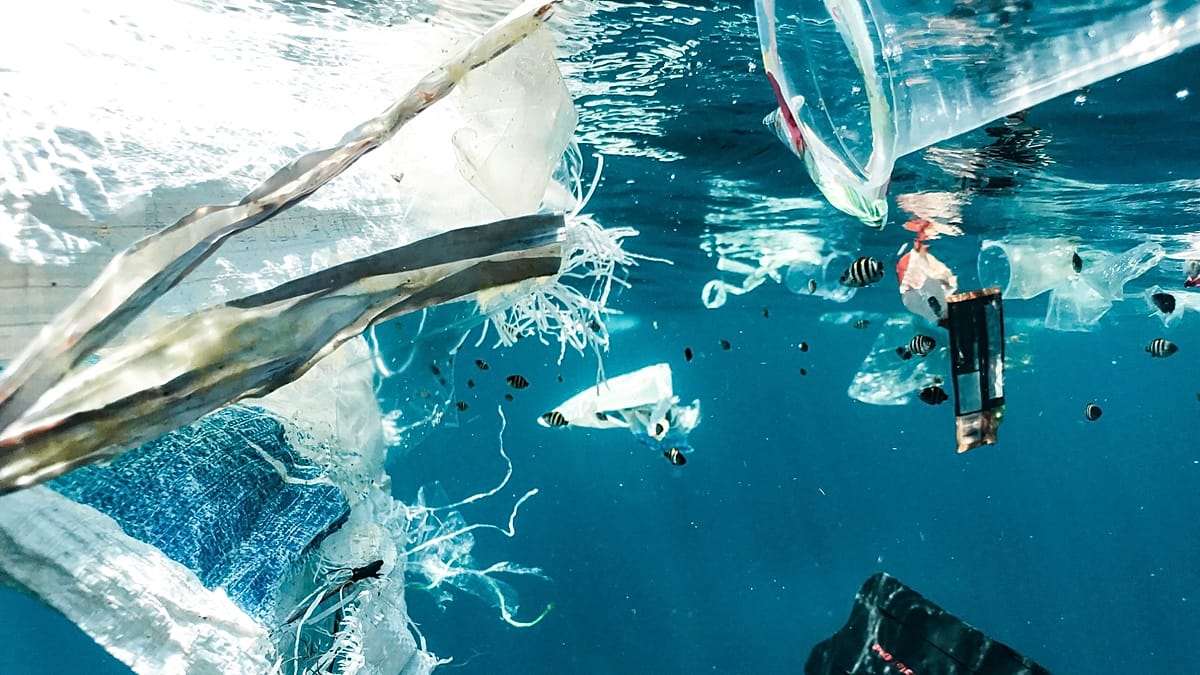Great Barrier Reef suffers worst coral decline on record – BBC

Report on the State of the Great Barrier Reef: 2024-2025 Findings
Executive Summary
A recent report from the Australian Institute of Marine Science (AIMS) for the 2024-2025 period reveals an unprecedented decline in coral cover across the Great Barrier Reef (GBR), the largest annual loss recorded in nearly four decades. The primary driver of this degradation is climate change-induced marine heatwaves, which have caused the most severe and widespread coral bleaching event to date. These findings represent a critical failure to meet the objectives of Sustainable Development Goal 13 (Climate Action) and pose a direct and immediate threat to the viability of Sustainable Development Goal 14 (Life Below Water). The report indicates the GBR ecosystem is approaching a tipping point, beyond which its natural capacity for recovery may be permanently lost, jeopardizing one of the planet’s most significant marine habitats.
Key Findings from the 2024-2025 AIMS Report
Record Coral Decline and Bleaching Events
The AIMS survey, conducted between August 2024 and May 2025 across 124 reefs, documented the following critical developments:
- Unprecedented Coral Loss: The GBR experienced the most significant annual decline in coral cover since monitoring began in 1986.
- Extensive Bleaching: The northern and southern regions of the reef suffered their most widespread bleaching event on record, a direct indicator of severe thermal stress. This was the sixth mass bleaching event since 2016.
- Simultaneous Bleaching: For the first time, Australia’s two largest reef systems, the Great Barrier Reef and the Ningaloo Reef, experienced mass bleaching concurrently, highlighting the systemic scale of the climate crisis impacting marine ecosystems.
Causal Factors and Environmental Stressors
The degradation of the reef is attributed to a combination of factors, with climate change being the predominant cause. This directly challenges the global community’s progress on SDG 13 (Climate Action).
- Climate Change and Heat Stress: Unusually warm ocean temperatures are the primary driver of mass coral bleaching. Coral is highly sensitive to temperature fluctuations, with mortality likely after prolonged exposure to temperatures just 1-2°C above its normal thermal limit.
- Natural Weather Patterns: The effects of climate change are exacerbated by natural phenomena such as El Niño, which contributes to elevated sea surface temperatures.
- Secondary Stressors: The reef’s resilience is further weakened by secondary pressures, including tropical cyclones and predation by crown-of-thorns starfish.
Implications for Sustainable Development Goals (SDGs)
SDG 14: Life Below Water
The report’s findings illustrate a severe setback for SDG 14, which aims to conserve and sustainably use the oceans, seas, and marine resources. The health of the GBR is a key indicator for this goal.
- Loss of Biodiversity: Coral reefs, including the GBR, are vital ecosystems that support an estimated 25% of all marine species. The decline of Acropora corals, a fast-growing foundational species, signals a catastrophic loss of habitat and biodiversity.
- Ecosystem Collapse: The report warns of a “volatile” future where the frequency and severity of bleaching events outpace the reef’s ability to recover, risking a permanent ecosystem shift and the loss of its ecological functions.
- Threat to a World Heritage Site: UNESCO’s warning that the GBR is “in danger” underscores the global significance of this loss and the failure to protect a critical component of our planet’s marine heritage.
SDG 13: Climate Action
The condition of the Great Barrier Reef serves as a stark and measurable consequence of inadequate global efforts to combat climate change, as mandated by SDG 13.
- A Barometer for Climate Change: The “unprecedented levels of heat stress” documented by AIMS are a direct result of rising global temperatures caused by greenhouse gas emissions. The reef’s decline is a clear signal that current climate action is insufficient to prevent catastrophic environmental impacts.
- Urgent Need for Ambitious Action: Experts, including Richard Leck from WWF, emphasize that without rapid and ambitious climate action to limit global warming, iconic ecosystems like the GBR will be irreversibly lost.
Mitigation Efforts and Future Outlook
Management Interventions
Targeted conservation efforts are underway to build reef resilience, aligning with the principles of SDG 14 and SDG 17 (Partnerships for the Goals). The Australian government’s crown-of-thorns starfish culling program has shown success, with the 2025 report noting no severe outbreaks in the Central GBR due to control activities. This program, which has eliminated over 50,000 starfish, demonstrates that direct management can alleviate secondary pressures, although it does not address the primary threat of climate change.
Expert Commentary and Global Context
There is a scientific consensus that the GBR is an “ecosystem under incredible stress.” Dr. Mike Emslie of AIMS noted the reef’s inherent ability to recover if given a chance, reinforcing the urgency of global action. However, the overarching message from the scientific and environmental communities is that local conservation efforts alone are insufficient. The long-term survival of the Great Barrier Reef is entirely dependent on the global community achieving the targets set forth in SDG 13 to drastically reduce emissions and stabilize the climate.
Analysis of Sustainable Development Goals in the Article
1. Which SDGs are addressed or connected to the issues highlighted in the article?
-
SDG 14: Life Below Water
This is the most central SDG, as the article’s entire focus is on the degradation of the Great Barrier Reef, a critical marine ecosystem. It discusses the decline in coral cover, coral bleaching, threats to marine biodiversity (as coral houses 25% of marine species), and pollution from land-based activities.
-
SDG 13: Climate Action
The article explicitly identifies “heat stress driven by climate change” as the “predominant reason” for coral bleaching. It discusses the impact of rising water temperatures and calls for “ambitious and rapid climate action,” directly linking the reef’s health to global climate patterns and the need to combat them.
-
SDG 11: Sustainable Cities and Communities
The article notes that the Great Barrier Reef is a “heritage-listed” site and that “Unesco warns the Australian icon is ‘in danger'”. This connects to the goal of protecting the world’s natural heritage.
2. What specific targets under those SDGs can be identified based on the article’s content?
-
SDG 14: Life Below Water
-
Target 14.1: By 2025, prevent and significantly reduce marine pollution of all kinds, in particular from land-based activities, including marine debris and nutrient pollution.
The article connects outbreaks of crown-of-thorns starfish to “nutrients from land-based agriculture run-off,” which is a form of nutrient pollution from a land-based activity.
-
Target 14.2: By 2020, sustainably manage and protect marine and coastal ecosystems to avoid significant adverse impacts, including by strengthening their resilience, and take action for their restoration in order to achieve healthy and productive oceans.
The article details the failure to protect the reef ecosystem from adverse impacts like bleaching. It highlights the reef’s declining resilience, stating it “may reach a tipping point where coral cannot recover fast enough,” and mentions restoration efforts like the starfish culling program and the reef’s “inherent ability to recover” if given a chance.
-
Target 14.5: By 2020, conserve at least 10 per cent of coastal and marine areas, consistent with national and international law and based on the best available scientific information.
The Great Barrier Reef is a massive, conserved marine area. The article’s focus on its degradation and “in danger” status underscores the challenges of effectively managing and protecting such conserved areas, which is the ultimate goal of this target.
-
Target 14.1: By 2025, prevent and significantly reduce marine pollution of all kinds, in particular from land-based activities, including marine debris and nutrient pollution.
-
SDG 13: Climate Action
-
Target 13.1: Strengthen resilience and adaptive capacity to climate-related hazards and natural disasters in all countries.
The article describes mass coral bleaching as a climate-related hazard. It notes the reef has “experienced unprecedented levels of heat stress” and that its ability to “keep bouncing back” is a major concern, highlighting a loss of resilience and adaptive capacity in this natural system due to climate change.
-
Target 13.1: Strengthen resilience and adaptive capacity to climate-related hazards and natural disasters in all countries.
-
SDG 11: Sustainable Cities and Communities
-
Target 11.4: Strengthen efforts to protect and safeguard the world’s cultural and natural heritage.
The article explicitly refers to the Great Barrier Reef as a “heritage-listed” site and a “Unesco… Australian icon” that is “in danger.” This directly relates to the need to safeguard significant natural heritage sites from threats like pollution and climate change.
-
Target 11.4: Strengthen efforts to protect and safeguard the world’s cultural and natural heritage.
3. Are there any indicators mentioned or implied in the article that can be used to measure progress towards the identified targets?
-
Indicators for SDG 14 (Life Below Water)
- Indicator for Target 14.1 (Reduce Marine Pollution): The article mentions the “crown-of-thorns starfish culling programme” and its success, noting that “there were no potential, established, or severe outbreaks… recorded on Central GBR reefs in 2025.” The number or density of crown-of-thorns starfish serves as an indirect indicator of nutrient pollution from agricultural run-off.
- Indicator for Target 14.2 (Protect Marine Ecosystems): The article states that parts of the reef “have suffered the largest annual decline in coral cover since records began.” The percentage of live coral cover is a direct indicator used by the Australian Institute of Marine Science (AIMS) to measure the health of the reef ecosystem. The spatial extent and severity of coral bleaching events are also key indicators mentioned.
-
Indicators for SDG 13 (Climate Action)
- Indicator for Target 13.1 (Strengthen Resilience): The article mentions the frequency of climate-related hazards, noting the “sixth such [bleaching] event since 2016.” The frequency and severity of mass bleaching events, driven by “unusually warm tropical waters,” serve as clear indicators of the impact of climate-related hazards on the ecosystem.
-
Indicators for SDG 11 (Sustainable Cities and Communities)
- Indicator for Target 11.4 (Protect Natural Heritage): The article refers to the official designation by Unesco that the reef is “‘in danger'”. The status of a site on the UNESCO World Heritage in Danger list is a direct, internationally recognized indicator of whether a natural heritage site is being adequately protected and safeguarded.
4. Summary Table of SDGs, Targets, and Indicators
| SDGs | Targets | Indicators |
|---|---|---|
| SDG 14: Life Below Water |
14.1: Reduce marine pollution from land-based activities.
14.2: Sustainably manage and protect marine and coastal ecosystems. 14.5: Conserve coastal and marine areas. |
– Number and severity of crown-of-thorns starfish outbreaks (as an indicator of nutrient pollution).
– Percentage of live coral cover. – Conservation status of the protected area (i.e., its health despite being conserved). |
| SDG 13: Climate Action | 13.1: Strengthen resilience and adaptive capacity to climate-related hazards. |
– Frequency of mass bleaching events (e.g., “sixth such event since 2016”). – Measurement of heat stress in ocean waters. |
| SDG 11: Sustainable Cities and Communities | 11.4: Strengthen efforts to protect and safeguard the world’s cultural and natural heritage. | – Official status on the UNESCO World Heritage ‘in danger’ list. |
Source: bbc.com

What is Your Reaction?
 Like
0
Like
0
 Dislike
0
Dislike
0
 Love
0
Love
0
 Funny
0
Funny
0
 Angry
0
Angry
0
 Sad
0
Sad
0
 Wow
0
Wow
0













































































